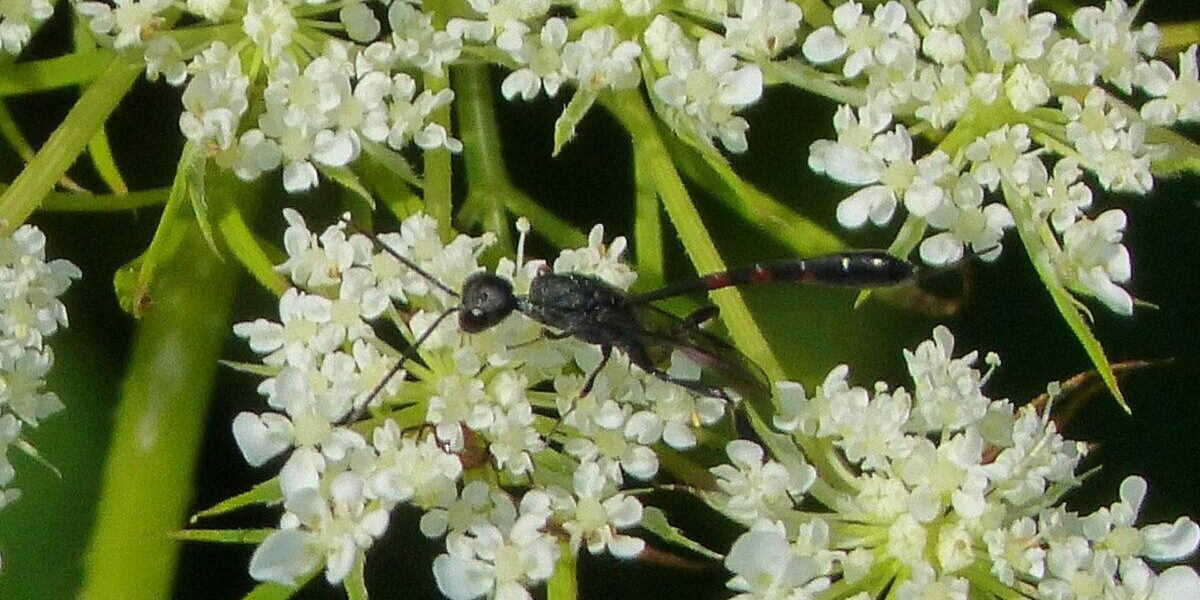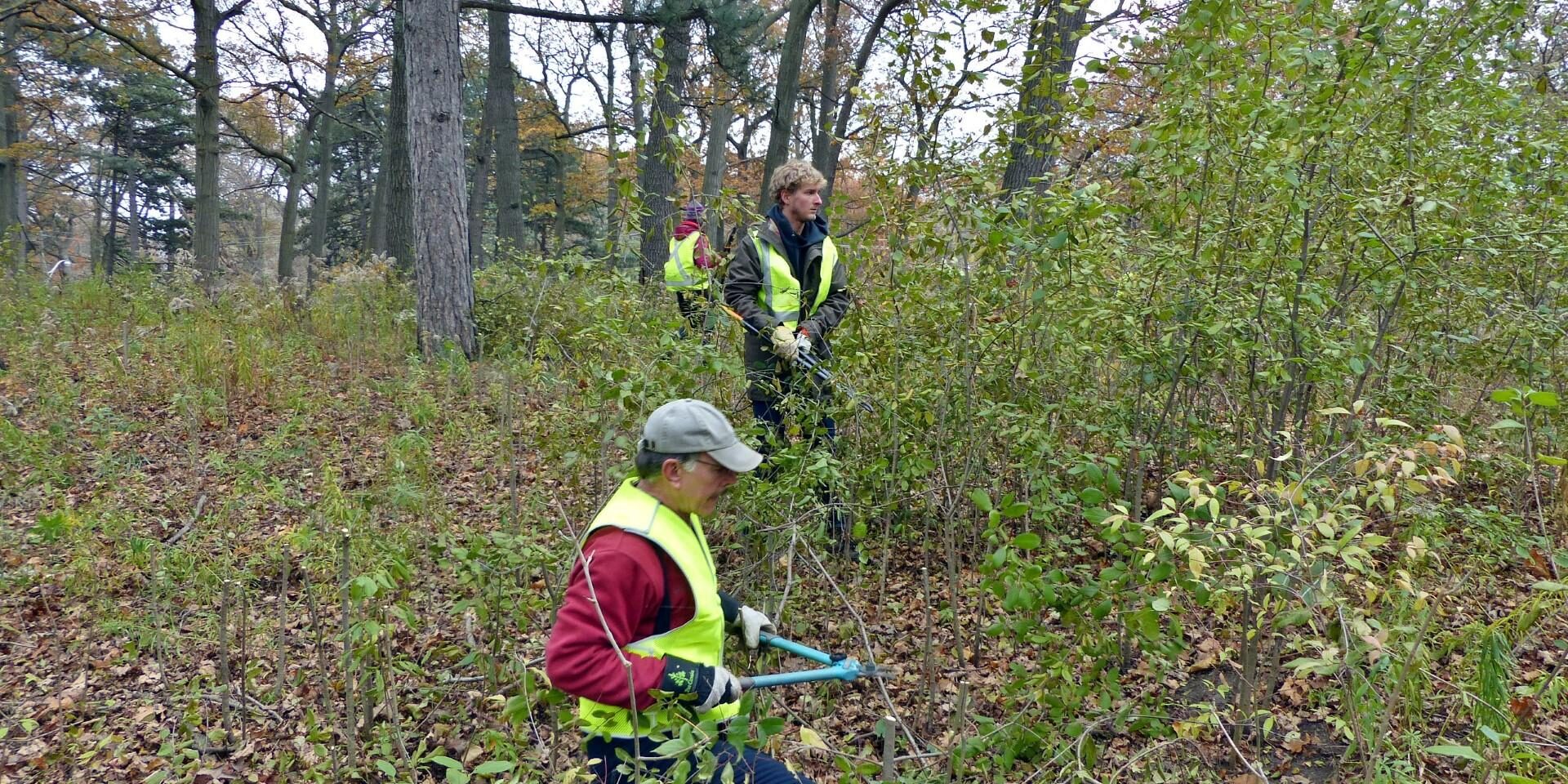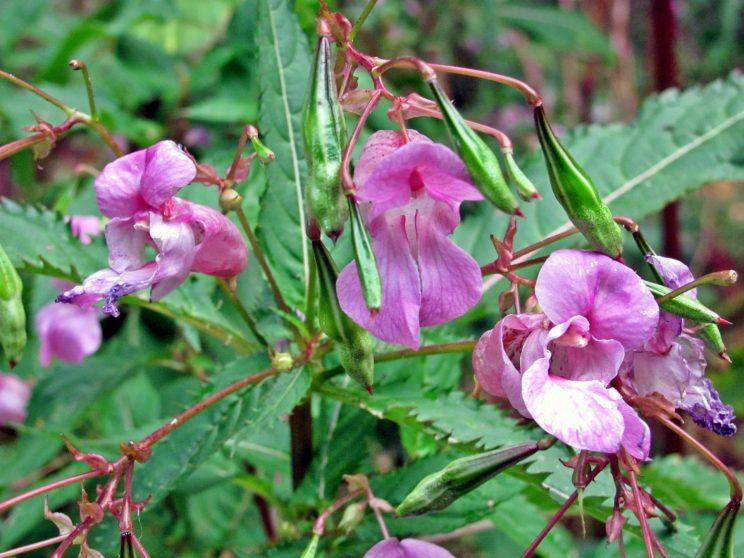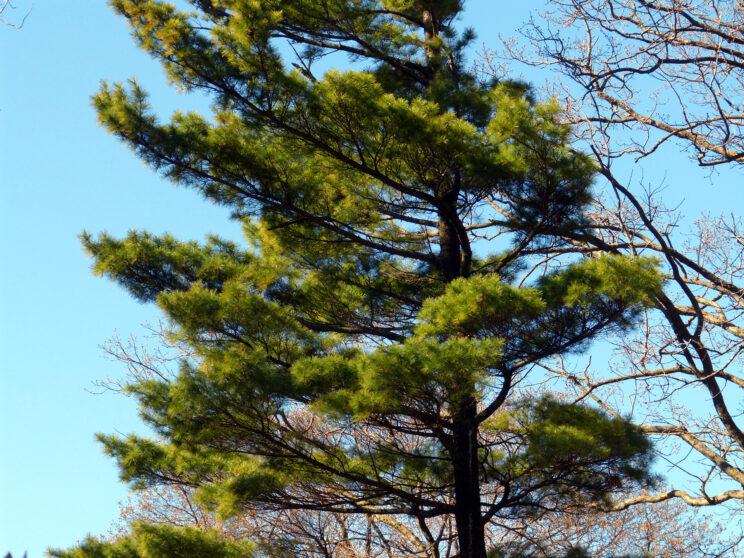by Kathleen Keefe
This familiar wildflower loves to start colonies where soil has been disturbed. The opportunist gathers along borders of change, gracing edges of walkways and roadways, with lacy white heads nodding in the summer breeze like a receiving line for passersby. In England, from where the plant hails, 18th century courtiers used it as living lace.
This lovely flower came to North America with colonists who believed in its medicinal properties. This parsley relative (Daucus carota, also known as wild carrot) easily established itself and spread widely across a continent that had never seen it before.

Do the Math
Given an opening and opportunity, Queen Anne’s lace can thrive in High Park’s sandy soil wherever it finds sunlight. Insects can pollinate the flower, but it can also self-fertilize, needing just a single plant to colonize an open area. Each of the plant’s many white umbel clusters contains as many as 1000 tiny flowers and the plant continues to make them from June through September. In turn, each of those thousands of tiny flowers dries into a bristly seed and drops to the ground or clings to passing fur, feathers or clothing on its way to a new home.
Nip it in the Bud
Queen Anne’s lace (and its less conspicuous but more insidious cousin, Japanese hedge parsley) is a potential threat to High Park’s rare oak savannah and prairie habitats wherever native plant communities are not already healthy and robust. If allowed to get established, it can out-perform and displace native species. In spite of its dainty delicate name and appearance and beneficial role as a host plant or nectar source for some insects, it can become an aggressive invader that’s better left uninvited. Fortunately, once established it can be controlled by conscientious, strategically-timed hand-pulling – making it not nearly as troublesome as other very aggressive invaders in High Park.
Planted with Good Intentions
In 1756, the Norway maple was brought to North America as a hardy shade-tolerant ornamental tree well adapted to adverse conditions. No one could have foreseen just how true and problematic those characteristics would turn out to be! The tree thrives just about anywhere, creating such dense shade, thick layers of leaf litter and chemical changes to the soil that almost nothing can live beneath a Norway maple except another Norway maple!
And there are more… Buckthorn was imported to serve as farm fencerows and windbreaks. Sweet white European clover was, and still is valued as a nitrogen-fixing cover crop, forage for cattle and nectar source for honeybees. Celandine was invited as a medicinal herb. Garlic mustard came as a garden vegetable. Others were originally imported to North American gardens for ornamental landscaping. These include Himalayan balsam, Japanese knotweed, euonymus (burning bush and spindle tree), Asian bittersweet and tree of heaven. Although some of these plants have now been banned and cannot be sold or planted legally in Ontario, many are still commonly offered for sale in nurseries.
Superpowers
Far from their original habitats, the worst invaders seem fueled by superpowers. Some have absolutely no predators in their new territory to eat them or use them. Some can produce more seeds than any native plant and what’s worse, the seeds are also more viable. Some plants have an underground root system so massive that it could occupy half a football field. Some have seeds that can float in the air for ten kilometres, and some can completely colonize a new area from a mere nub of runaway rhizome in a waterway. Others have poisonous roots that change the chemistry of the soil so nothing else can live there. One invasive plant is so aggressive (think: coming up through the foundation into the living room) that in England people must declare its existence on their property before selling. There are plants that leaf out first in spring and lose leaves last in fall, ensuring an extra long growing season and shading out other vegetation. Some berry-producing plants yield and retain fruit so appealing that birds and mammals spread their seeds far and wide.
Tenacious Trouble
Perhaps one of the most impressive superpowers common to many invasive species is their resistance to removal. An estimated 75% of habitat restoration involves controlling invasive species. The challenge of managing invasive species in High Park is met by the concerted efforts of City of Toronto Forestry staff and volunteers, with some help from the Toronto and Region Conservation Authority (TRCA).
The unique habits and characteristics of each invasive species are carefully considered in choosing the most effective method and timing of suppression technique. Over time the success of each strategy is monitored and evaluated. Some successful approaches include mowing, cutting, hand-pulling, girdling, prescribed burning, smothering, outright removal, biological controls and, as a last resort, selectively applying herbicides.
What works on some does not work on others. Cutting or mowing actually stimulates growth for some invaders. Some respond exuberantly to hand-pulling by multiplying from broken root fragments left behind in the soil. Some invasive species are suppressed by prescribed burns, while others actually thrive in response to fire. Even smothering the soil with dark plastic or other opaque material works for some invasive species, whereas others have seeds that remain viable in the soil for many decades.




















